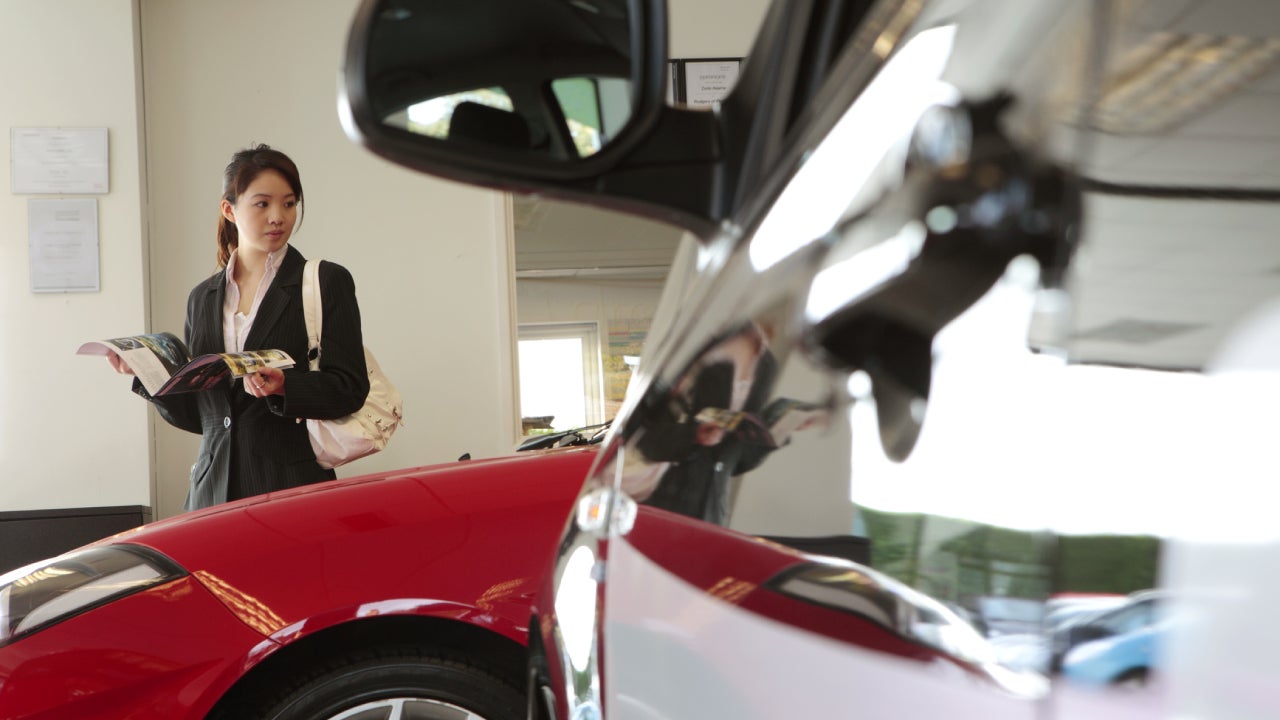FR-44 insurance: What it is and when you need it

FR-44 insurance is used in Virginia and Florida for drivers who are convicted of a serious infraction, such as a DUI. Despite the name, it’s not actually a type of insurance, but instead a certificate generated by your insurance company. It verifies that you are carrying adequate liability insurance for the required time period, proving to the Department of Motor Vehicles (DMV) in your state that you’re remaining compliant. We explain what you need to know about FR-44 insurance in Virginia and Florida so you can avoid penalties and remain compliant with state law.
What is FR-44 insurance?
FR-44 insurance, also known as an FR44, is a certificate of financial responsibility required of drivers who have been found guilty of serious infractions, including driving under the influence or harming someone else while behind the wheel. While the FR-44 is not actually insurance, it does prove that you carry a certain level of liability insurance as mandated by your state (and are maintaining it with no lapses). Typically, your insurance company will file the FR-44 electronically on your behalf, often with a small fee attached.
It’s important to note that filing an FR-44 is not optional if you have been ordered to obtain it. For instance, in Virginia, if you don’t get an FR-44 after a qualifying infraction, the DMV could place a stop on your driver’s license. This would stop you from being able to renew your license or perform any other related transactions.
This insurance is similar to SR-22 insurance, but the requirements are much different. An FR-44 has much more stringent requirements and terms than the standard SR-22. Like an SR-22, the offenses that can trigger an FR-44 requirement can have long-term ramifications, such as higher insurance premiums. When you have a significant offense on your record, insurance companies will likely classify you as a high-risk driver and therefore will likely charge more for your annual premium.
Who needs an FR-44?
An FR-44 is required for drivers in Virginia and Florida who have committed certain serious offenses, often related to driving under the influence or other similar violations. Here here some common reasons drivers might need an FR-44:
- DUI/DWI conviction: A common reason someone might need an FR-44 is after a conviction for DUI or DWI. This requirement is usually imposed as part of the reinstatement process for a suspended or revoked driver’s license.
- Driving with an invalid license: Driving while your license is suspended or revoked due to a DUI can also trigger the need for an FR-44.
- Causing serious harm: If you are convicted of causing injury or death while driving, you will also be required to get an FR-44 in states that use it.
- Repeat offenses: Individuals with repeated serious traffic violations may be required to obtain an FR-44 to prove they have the financial means to cover higher liability limits.
The FR-44 requirement is meant to ensure that high-risk drivers carry sufficient insurance coverage to financially protect other drivers on the road. You will typically see higher insurance premiums due to the increased coverage requirements and your risk profile, depending on your insurer.
How does an FR-44 impact my insurance?
The impact of an FR-44 on insurance involves several considerations for high-risk drivers. Obtaining auto insurance can become more challenging, and if you are approved, you might find that your coverage isn’t the cheapest — insurance companies often charge higher rates to account for the increased risk.
Additionally, an FR-44 often necessitates purchasing more extensive auto insurance coverage than what is standard. Some insurers might also require these policies to be paid for in advance, either annually or bi-annually, reflecting the increased risk and administrative requirements associated with high-risk coverage.
Not all insurance carriers issue FR-44s. If you are required to file one and your carrier doesn’t offer this service, you may need to switch car insurance companies to fulfill your legal requirement.
States that require FR-44s
An FR-44 form is used specifically in two states: Virginia and Florida. Although both states require this form from your insurer, the requirements for each state vary slightly.
Virginia
The Virginia Department of Motor Vehicles (DMV) requires that you obtain an FR-44 if you have committed certain offenses on or following January 1, 2008, or if you have been mandated per court order to continue FR-44 certification.
You will need an FR-44 if you have any of the following crimes on your record:
- Driving on a suspended license or one forfeited due to a conviction
- Driving while under the influence of intoxicants or drugs
- Maiming under the influence
- Violation of any federal, state or local law similar to the above
Virginia FR-44 liability insurance requires that you purchase at least double the SR-22 insurance coverage limits in the state.
Virginia FR-44 insurance requirements
- Bodily injury liability per person: $60,000
- Bodily Injury liability per accident: $120,000
- Property damage liability: $40,000
Florida
Florida FR-44s are most commonly required following DUI convictions, but the minimum liability insurance requirements are different from Virginia. If your Florida DUI or DWI conviction was on or before February 15, 2008, you are not required to obtain an FR-44. For all convictions thereafter, drivers in Florida must carry an FR-44.
Florida FR-44 insurance requirements
- Bodily Injury liability per person: $100,000
- Bodily Injury liability per accident: $300,000
- Property Damage liability: $50,000
Additionally, Florida charges varying fee amounts based on the number of DUI convictions that you have.
Florida DUI fee schedule
| Number of convictions | Fee amount |
|---|---|
| First conviction | $500 to $2,000 |
| Second conviction | $1,000 to $4,000 |
| Third conviction | $2,000 to $4,000+ |
| Fourth or subsequent convictions | $2,000 to $4,000+ |
Although most insurance companies should be able to file an FR-44 for you, not all will offer a policy to those considered high-risk. If you’re having trouble finding coverage, you may want to speak with an independent agent. Failing to obtain an FR-44 when required could result in the suspension of your driving privileges and vehicle registration.
Can I get an FR-44 without a car?
Not all FR-44 holders actually own a car. Some people still want to hold a valid driver’s license so that they can drive when they want or need to. A lapse in car insurance can also mean more expensive car insurance premiums when you have a car again.
If you have a valid driver’s license but do not currently own a car, non-owner car insurance can ensure that you have uninterrupted auto insurance coverage that protects you if and when you slide behind the wheel.
A non-owner auto insurance policy generally includes both bodily injury liability and property damage liability. Medical and uninsured motorist coverage may also be covered under your non-owner insurance policy. Damage to rental or borrowed vehicles is not usually covered, as well as things like comprehensive, collision and towing coverage, which require additional insurance.
FR-44 vs. SR-22
An FR-44 certificate is specific to Florida and Virginia, whereas an SR-22 is a more commonly used certificate across various states in the U.S. Both the FR-44 and SR-22 serve similar purposes, but there is a key distinction.
The FR-44 typically mandates higher liability coverage limits, while an SR-22 simply requires the holder to maintain the state’s minimum liability coverage. Essentially, the SR-22 is a form that proves you carry your state’s legally required liability insurance.
Frequently asked questions
You may also like

What does life insurance cover?

Do you need insurance to buy a car?

Car insurance for high-risk drivers in Michigan



